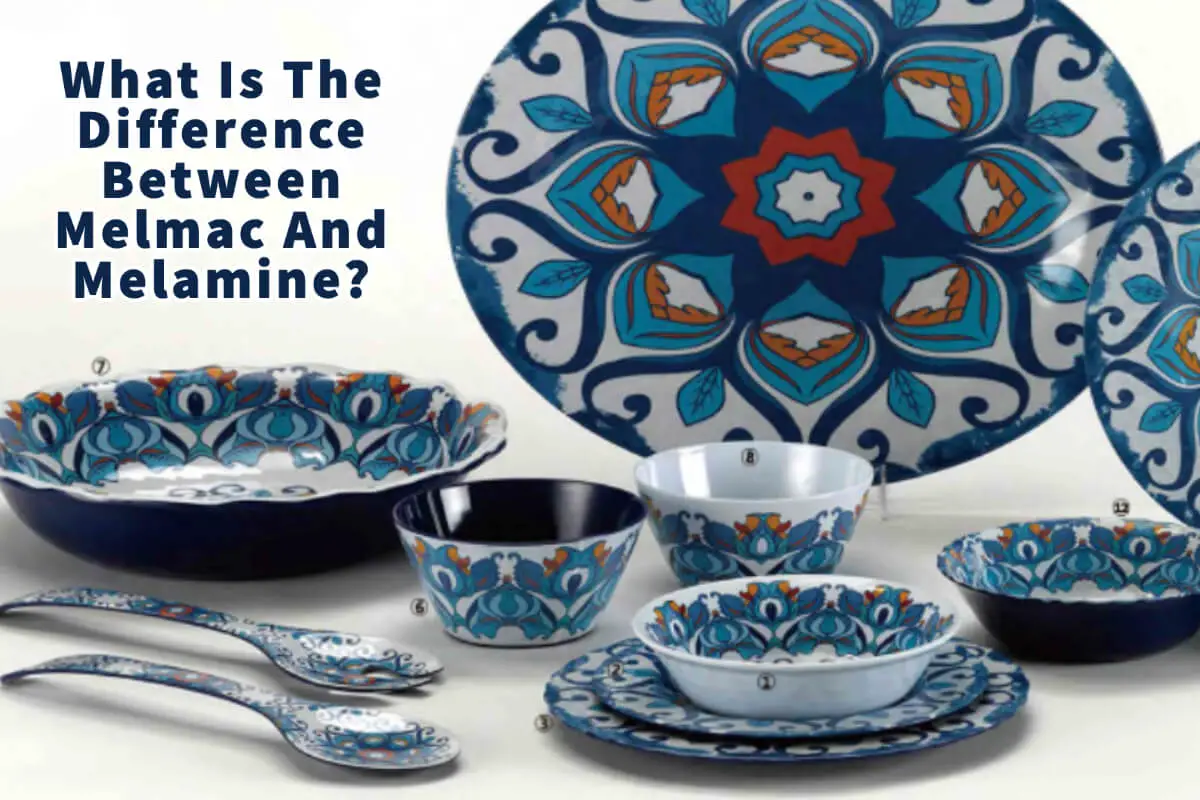It was probably melamine or Melmac ware if you have ever eaten on a reusable plastic plate. There can be confusion about the difference between Melamine ware and Melmac ware.
Melmac is the brand name of the melamine ware plates produced by the American Cyanamid Corporation. Most Melmac plates are vintage ones made in the 1940s to 1970s. Melamine is a chemical substance that produces various products, including melamine ware, laminate, Formica, and dry eraser boards. Melmac and melamine ware are essentially the same things, but Melmac is a brand name for melamine ware produced in the United States. Today, melamine ware is produced overseas and imported into the United States.
Table of Contents
Melmac Vs. Melamine
Melmac refers to the materials used to manufacture melamine dishes popular from the 1940s to the 1970s. If you grew up in that era, they were the dishes your family may have used.
I remember we had a set of some Melmac dishes we used to use when we went out on a picnic or ate outside. Melmac is the word used to refer to the melamine material used for vintage dishes from this era.
Melmac is not a material but is a brand name for the melamineware that the American Cyanamid made. American Cyanamid was an American company that produced melamine ware from 1940 to the 1970s. In 1994, American Cyanamid merged with American Home Products, now known as Wyeth.
Melmac was a brand name given to the melamine ware that the American Cyanamid produced for their melamine plates and other dishes from the 1940s to the 1970s. Melmac is essentially melamine ware dishes.
Melamine is an organic material used today in melamine dishes and other products. Melamine is made from a substance called Melamine-formaldehyde. The dishes form when the molecular structure is heated and molded.
Melmac and melamine are very similar materials, but since the 1970s, the technology for melamine has increased. The dishes made with melamine today are considered safe by the FDA and are FDA-approved.
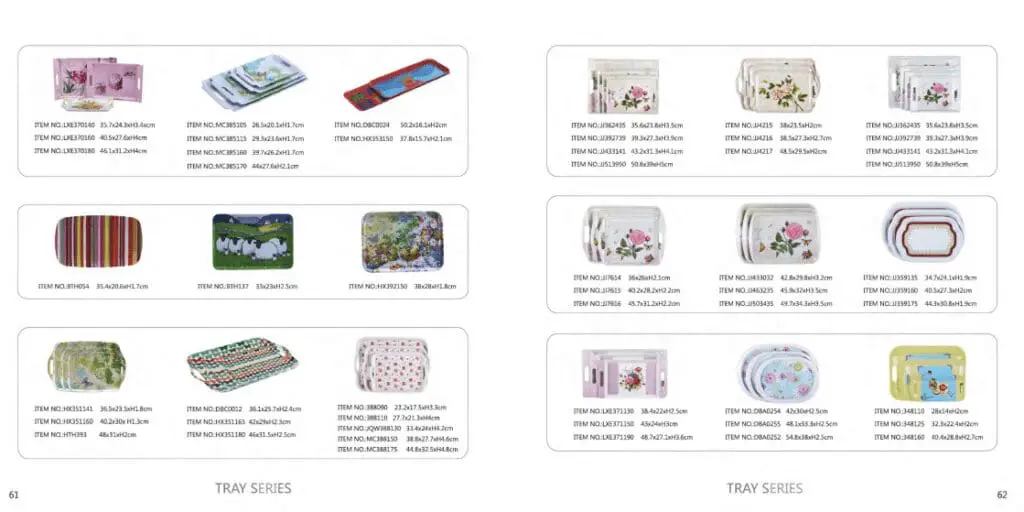
The vintage Melmac dishes may not have FDA approval even if the material is similar. Melmac and melamine are the same materials, except today, with technology, melamine ware has had the advantage of having better technology available to us than in the 1940s to 1970s.
Since then, the FDA and other food agencies have tested extensively to ensure that the melamine ware dishes are safe.
FDA And Melamine Safety
The FDA (Food and Drug Administration) has tested melamine extensively to ensure that the material is safe for dishes. Melamine is a trendy material for many people to use for plates and dinnerware.
Melamine is considered by the FDA a chemical and has been approved in the United States for manufacturing some cooking utensils, plates, plastic products, paper, paperboard, and industrial coatings. So you can see that the substance melamine has a variety of uses approved in the United States by the FDA.
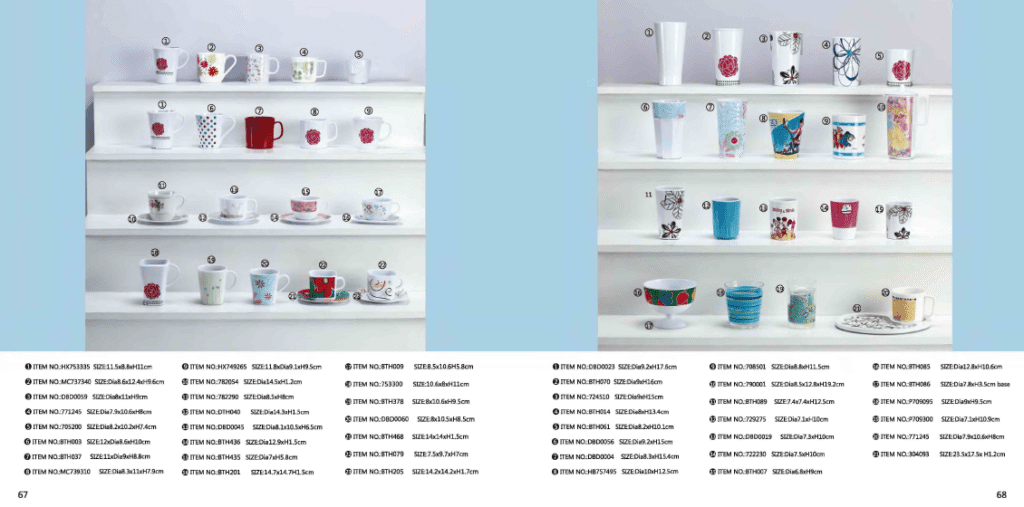
Today you can find melamine dishes purchased at almost every major store in the United States that sells tableware. For many, they are a popular choice as they will not break yet can have intricate designs printed on the surface of the plates.
“It has been found that melamine does not migrate from melamine-formaldehyde tableware into most foods. The only measured migration, in tests, was from some samples (three out of 19 commercially available plates and cups) into acidic foods, under exaggerated conditions (that is, the food was held in the tableware at 160 oF for two hours). When adjusted for actual-use conditions (cold orange juice held in the tableware for about 15 minutes), the migration would be less than 10 parts of melamine per billion parts of juice.“
FDA – US FOOD & DRUG ADMINISTRATION
The FDA recommends not heating food and drink using melamine ware utensils; melamine ware is not considered microwave-safe. The FDA recommends using approved materials such as ceramic or dinnerware listed as microwave-safe to heat food in a microwave.
Melamine is confirmed by the FDA to be used to make melamine ware dishes, but it is not approved to be added to foods for human consumption. Some companies may try to add melamine into foods to increase the protein content illegally. Ingesting melamine in large quantities is known to cause severe health issues for human beings.
Melamine is not only used in melamine ware dishes, but it can also be used in things like Formica, laminate floors, and even dry eraser broads—all things that many people have in their homes. Melamine is also found in insulation, soundproofing materials, and cleaning products such as magic erasers.
Melamine Ware Dinnerware
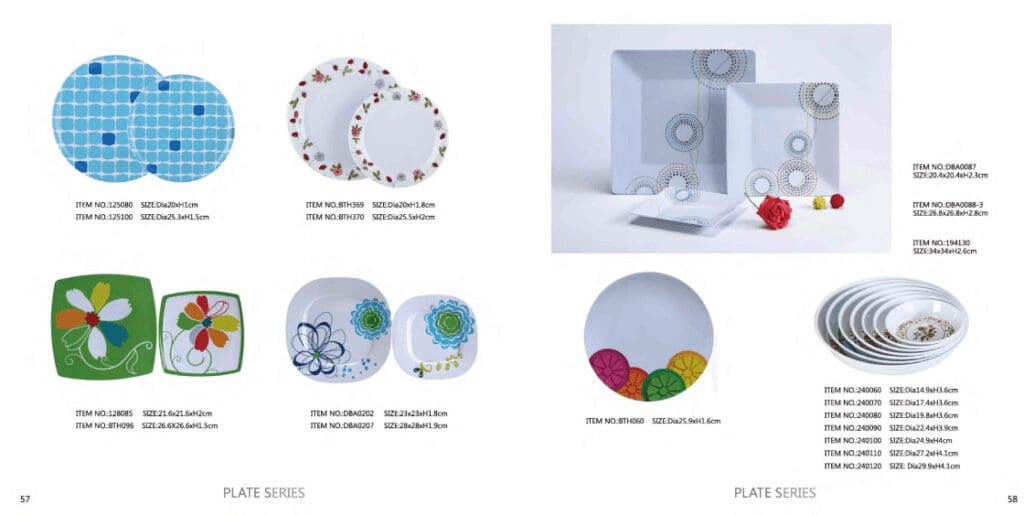
One way that melamine is most known is the melamine dinnerware. Today, melamine dinnerware is popular as it can be produced in various unbreakable designs and finishes.
Melamine ware dinnerware combines formaldehyde and other agents to produce melamine resins. The resins are highly durable plastic so they can be used in melamine dinnerware.
Even though melamine ware uses an agent combined with formaldehyde, it has been known not to pose any risk to humans in using dinnerware. All the tableware we produce and ship into the United States is FDA-approved as food safe.
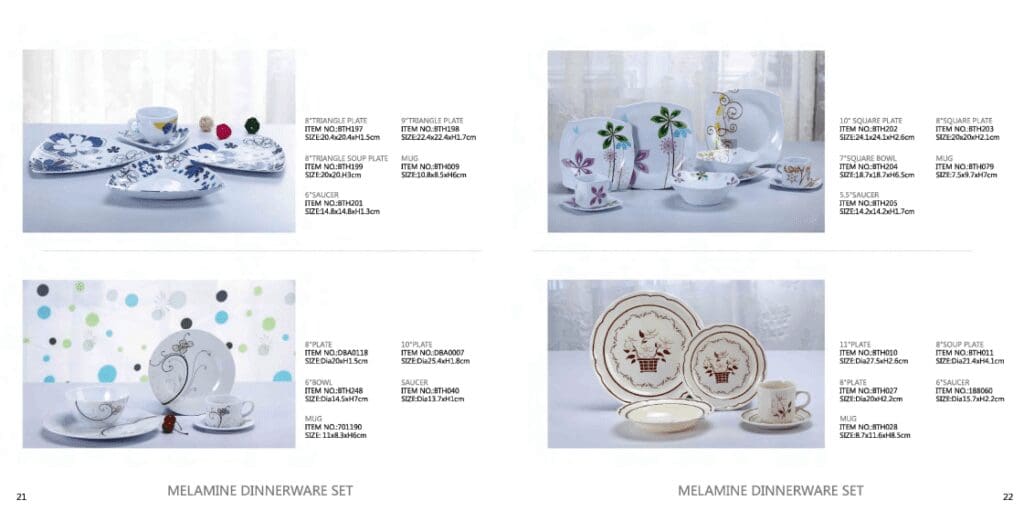
Here are some of the reasons why we love Melamine ware:
- Unbreakable – Melamine ware is unbreakable.
- Can Be Used Indoors Or Outdoors – Melamine can be used indoors or outdoors. It is a great reusable product for indoor and outdoor needs, such as camping.
- FDA Approved – All Melamine ware is FDA approved.
- Dishwasher Safe – All Melamine ware is also dishwasher safe.
- Great Patterns – Melamine ware lets you put many bright and unique patterns on the dinnerware.
- Great Price Points – Melamine has excellent price points compared to many other dinnerware materials.
If you are interested in Melamine products for your home decor needs, we would love to talk to you to see how Mondoro can help you find FDA-approved and export-quality melamine ware products for your home decor collection.
To find out more about how Mondoro can help you create, develop, and manufacture excellent home decor and home furniture products – including Melamineware dinnerware – don’t hesitate to contact me, Anita. Check out my email by clicking here or becoming a part of our community and joining our newsletter.
Mondoro gives out a FREE Lookbook to anyone interested. You can receive a copy of our latest Lookbook by clicking here.
Listen to our Podcast called Global Trade Gal. You can find it on all major podcast platforms. Try out listening to one of our podcasts by clicking here.
Subscribe to our Mondoro Company Limited YouTube Channel filled with great videos and information by clicking here.
Related Content
What Is The Difference Between Stoneware And Earthenware?
Earthenware is an iron-rich clay fired at much lower temperatures than stoneware. Due to its iron content, Earthenware will often have an orange color or cast. Stoneware is fired at a higher temperature than earthenware and is used extensively to manufacture tableware.
You can discover more by reading What Is The Difference Between Stoneware And Earthenware? by clicking here.
Earthenware, Stoneware, And Porcelain Materials
Earthenware, stoneware, and porcelain are all made with various clays and then fired. The kind of clay used and the temperature they are fired can make a difference as to how soft or hard the actual end product is. Though they can all seem to be similar, they are all very different materials and products.
You can discover more by reading Earthenware, Stoneware, And Porcelain Materials by clicking here.
Does Porcelain Crack Under Heat?
Porcelain is a highly durable clay fired at very high temperatures, often called “high-fired porcelain.” Because it is fired at such high temperatures, it is tough for porcelain to crack or damage due to heat.
You can learn more by reading Does Porcelain Crack Under Heat? by clicking here.

